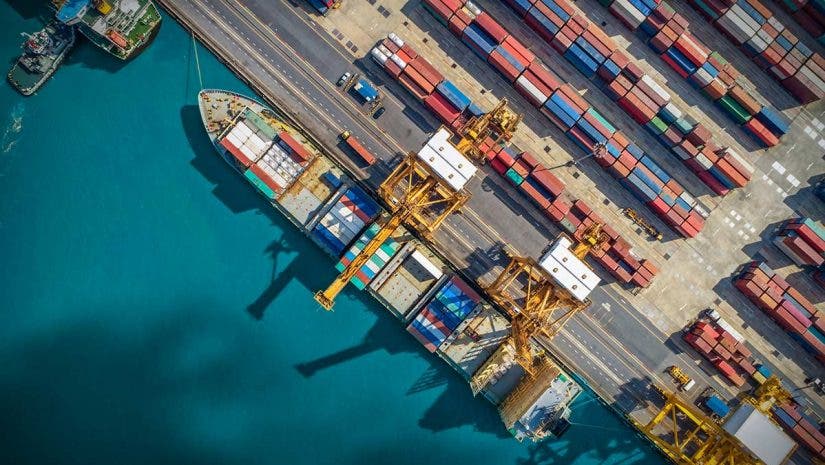The COVID-19 pandemic indeed sent a shockwave worldwide in the spring of 2020. It was the catalyst for one of the most significant disruptions on the supply chain ever for all goods — from chicken and toilet paper to beer cans and microchips. The headlines warn of shipping delays, low stock, and getting your holiday list done early, seemingly daily. The supply chain crisis continues to plague the global market.
How did COVID-19 create a supply chain crisis?
As the virus spread worldwide, demand for work from home equipment, flour for the sourdough fans, and even electronic gadgets to pass the time increased tenfold as manufacturers quarantined and shortened hours. This created what the Institute for Supply Management calls the perfect storm. Outdated supply procedures, disrupted manufacturing, and labor shortages hurt the pipeline and set everything back, creating a worldwide supply chain crisis.
“It reflects the fact that we’ve spent 25 years creating these incredibly complicated, complex global supply chains. And they were designed for cost and efficiency. Still, without really a thought to what could go wrong along the way,” Susan Lund, partner at the McKinsey Global Institute in Washington, DC, said on a McKinsey Podcast episode.
A side effect of raw material shortage is the increase in prices along the supply chain — from manufacturing and shipping to assembly and final cost at the retail store. On top, of course, of limited inventory available. Chip component prices rose 40%, following a significant shortage in January 2021 when demand skyrocketed. One of the leading chip manufacturers, Taiwan, suffered substantial setbacks due to the pandemic.
For example, this chip shortage affected Sony’s inventory of cameras, discontinuing older models. In early November, Sony Japan apologized for halting the production of specific models to help supply and only focusing on select products.
Then, we witnessed an increase of container ships holding holiday gifts to go through ports worldwide. A McKinsey & Company survey found that many consumers did shopping earlier, forgoing their retailer loyalties in favor of stock elsewhere.
Supply chain challenges, from manufacturing to shipping, then affect consumer loyalties. According to McKinsey, when faced with an out-of-stock item, 70% of consumers switched retailers or brands instead of waiting for the product to come back in stock.

What’s the U.S. doing to combat supply chain struggles?
In light of the COVID-19 supply chain issues, President Joe Biden issued an executive order in February 2021 to explore the current weaknesses in the U.S. supply chain. For the 11 months prior, the U.S. saw extreme shortages across the automotive, electronics, and other industries — including lithium-ion batteries.
Currently, for example, China is the leading manufacturer of lithium-ion batteries. The U.S. is the leading exporter of lithium-ion batteries used in mobile phones, laptops, tablets, cameras, and other gadgets.
Imports of lithium-ion batteries into the U.S. surged 31% in value. According to a recent Descartes study, they grew at half that for quantity, showing a large gap between supply and demand. If manufacturing stops in China, it immediately stops the supply chain, and electronic gadgets cannot be made and sold simultaneously.
The goal of this administration’s risk assessment is to potentially bring some of this manufacturing back to the U.S. to avoid transport and help diversify sourcing.
Suppose manufacturers that create electronics have different places to source raw materials for electronics and other gadgets. In that case, it helps fortify the supply chain since if one country stops producing, there are still others to source from, according to Descartes’ study.
Lund agrees that there will be a big shift from companies to resilient supply chains and possibly regionalization of trade. “A big shift we’re seeing in companies around the world is they are reevaluating the geography of their supply chains,” she told the McKinsey podcast.
What’s next for the supply chain crisis?
Despite delays and labor shortages, retailers will continue to face higher freight costs to stock the shelves. As COVID-19 variants and consumers evaluate the risk, the surge and popularity of e-commerce will continue to last. McKinsey’s survey findings suggest retailers prioritize communication and transparency over shipping delays, shift promotions earlier, and attempt to diversify suppliers for backup plans.
Supply forecasters from the Institute for Supply Management for electronics don’t see an end in sight for supply chain shortages like microchips. From large enterprises to small business owners, every retailer is in the same boat — waiting for the supply chain to stabilize once again and apply any learnings to prevent future issues.
However, some expert projections have been showing a return to normal supply chain function since July 2022. While supply chain issues are remedying, it’s unlikely that we’ll see a fully “normal” system this year. More than likely, supply chain issues — as well as a slowdown in consumer demand — could continue into 2023.
How to Alleviate Supply Chain Issues
Luckily, there are ways to alleviate — or at the very least, limit — the effects of the supply chain crisis. When working with Adorama Business Solutions, you can participate in advance project planning to help allocate future stock. Account managers can also propose alternative in-stock brands, used gear, and even short-term rentals. Contact Adorama Business Solutions to start procuring the gear you need.






